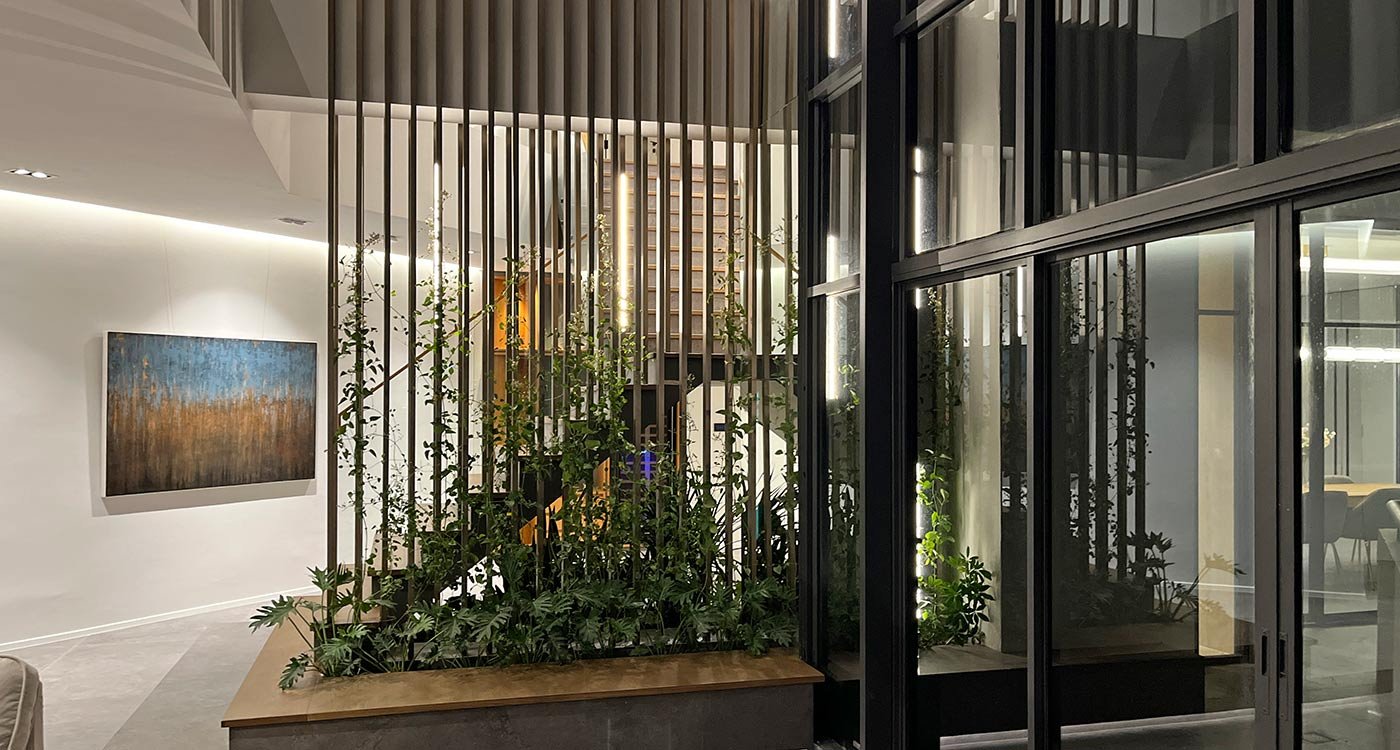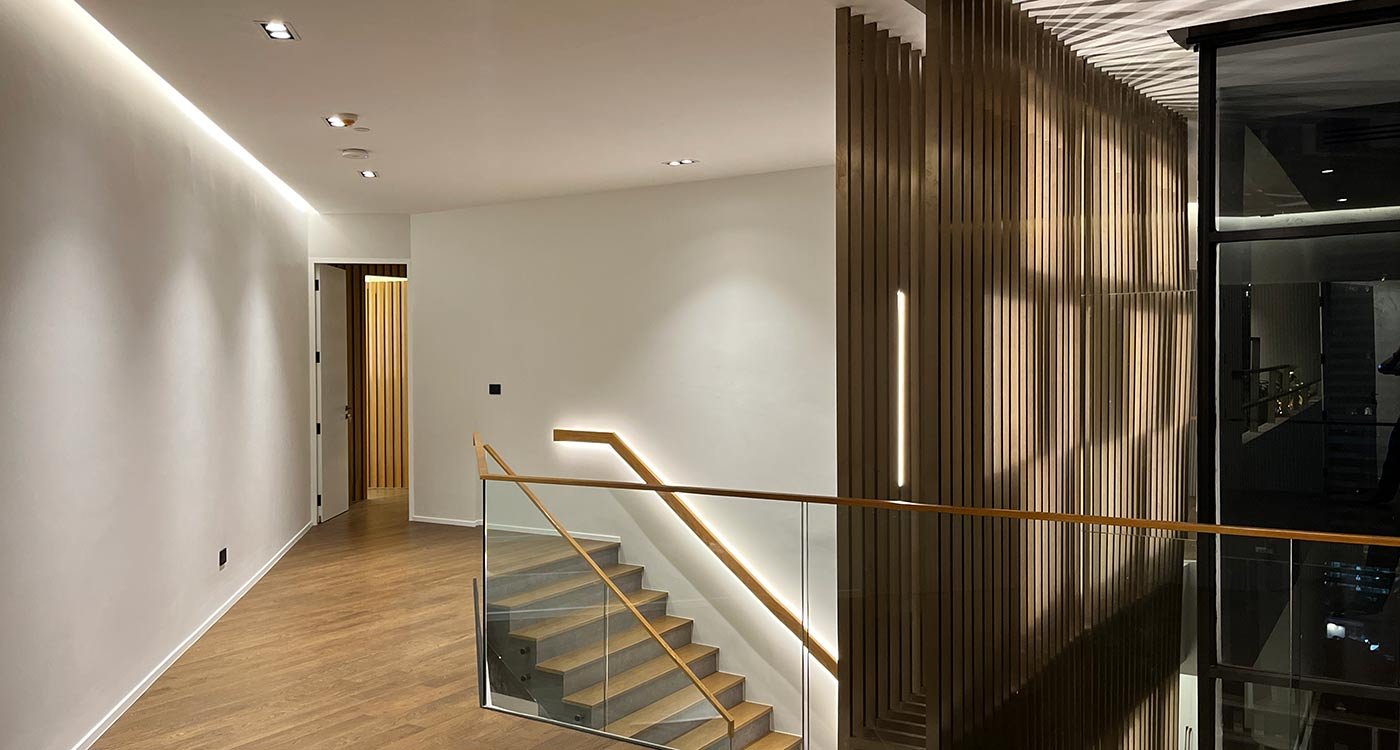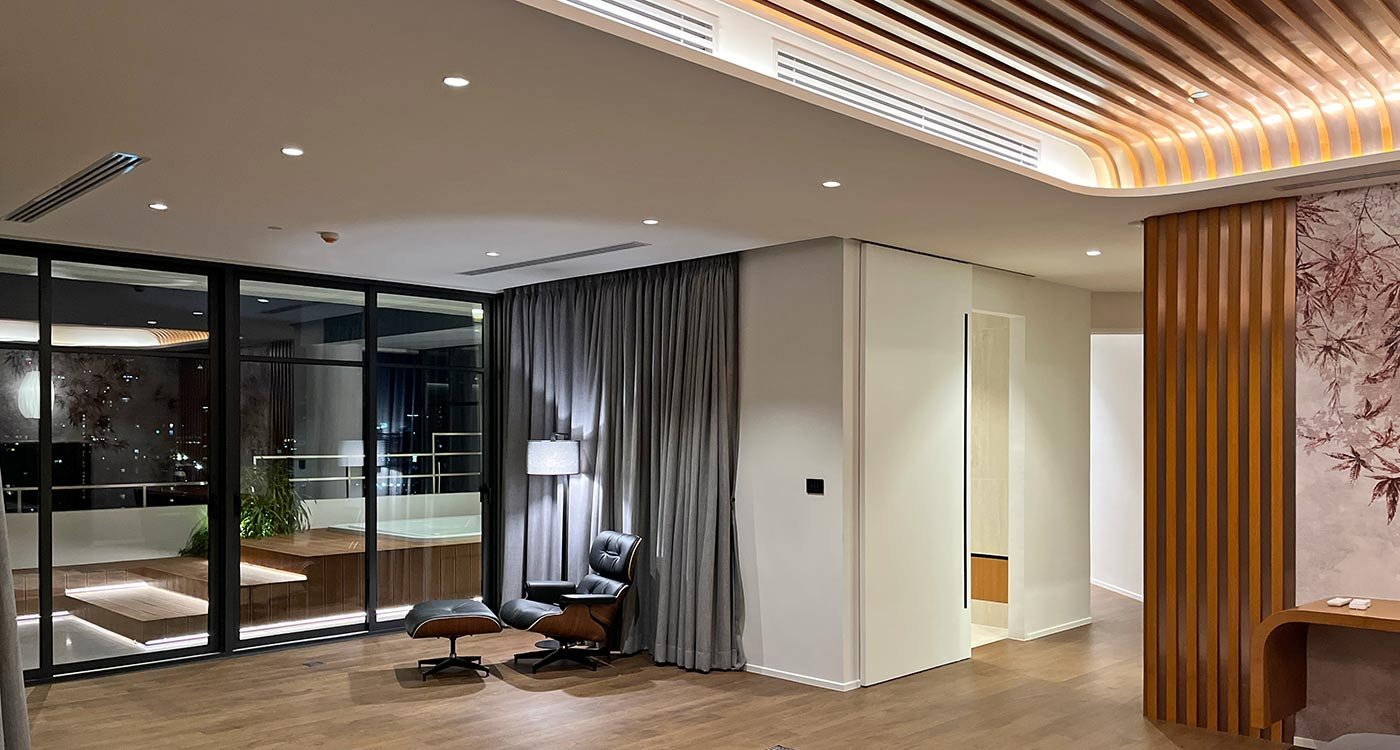The Secret to Great Indoor Lighting for Your Condo or House
When designing a home, natural daylight often takes center stage — and rightfully so. But just as important is the artificial lighting concept that brings your space to life after the sun goes down. At regroup architecture, we place careful attention on the lighting design right from the very start of every project, ensuring your home feels as inviting at night as it does during the day.
Functional Lighting: Lighting with Purpose
Good lighting isn’t just about aesthetics; it’s about functionality. The right lighting ensures key areas are well illuminated for practical use — think of the kitchen countertop, the stove, the bathroom mirror, or your workspace. Dining areas also benefit from carefully designed lighting to enhance the atmosphere during meals.
Additionally, spotlights can be used to highlight artworks, sculptures, or feature walls, giving your home an elegant and curated feel. Choosing the right ceiling spots and their placement is crucial for achieving a balanced, functional lighting plan.
Ambient and Accent Lighting: Setting the Mood
Indirect Lighting: Soft, Welcoming Glow
Indirect lighting uses hidden light sources — often placed in ceiling niches or along walls — to create a soft, diffused glow. It provides a warm ambient light that fills the room without harsh shadows. Indirect lighting also naturally highlights architectural features, adding depth, softness, and elegance to your space.
Accent Lighting: Highlighting Features
Accent lighting focuses on specific elements like paintings, sculptures, or textured walls. Carefully placed spotlights or directional ceiling lights draw attention to these details, adding a layer of sophistication and personalization to your home’s design. Proper accent lighting can turn ordinary spaces into curated experiences.
Outdoor Lighting: Extending the Living Space
Outdoor lighting on balconies, terraces, or gardens enhances the beauty of your greenery and allows you to enjoy your outdoor areas even after dark. Strategically placed lights among plants or along pathways not only create a decorative effect but also visually extend your interior space, making it feel larger and more connected to nature.
Flexibility: Lighting That Adapts to Your Lifestyle
A well-designed lighting plan should offer flexibility to match your daily activities. Separate lighting zones with individual switches allow you to easily adjust brightness levels — more light for cooking or reading, and softer light for relaxing movie nights.
Two-way and three-way switches are practical additions, offering control from multiple locations. For example, you can control stairwell lights from both the top and bottom of the stairs, or turn off bedside lamps without getting out of bed — small touches that greatly enhance comfort.
Smart Home Integration: Convenience at Your Fingertips
Smart home solutions make it easier than ever to control your lighting. Using your smartphone or tablet, you can create custom lighting “scenes” for different moods or activities. One particularly useful feature is the “All Lights Off” function, perfect for larger condos or multi-story houses when you’re heading out the door.
At regroup architecture, we advocate for a hybrid system: all lamps and switches are conventionally wired for reliability, with the smart home controls layered on top. This ensures you’re never too dependent on the internet or a smart home app — giving you the best of both worlds: modern convenience with traditional reliability.
Best practice office design
The best practice of office design and layouts is always undergoing changes and adaptions and reflec
Influence of COVID-19 on office designs
In the wake of the COVID-19 pandemic, the dynamics of office life have undergone a profound transfor
Origami facade development
Development process of an origami metal facade for an office building in Bangkok.






















